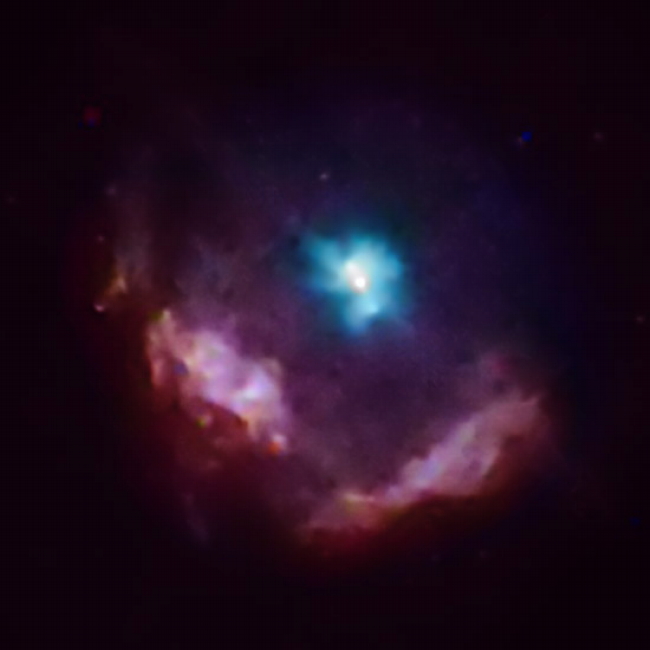
 Credit: NASA/CXC/GSFC/F.P.Gavriil et al.
Credit: NASA/CXC/GSFC/F.P.Gavriil et al.
Found Link?
The dead may yet change. The explosion of a massive star about 700 years ago left behind a stunning supernova remnant called by astronomers Kes 75, along with a rapidly spinning superdense neutron star near its center. Observations with the Rossi X-ray Timing Explorer showed intense, short bursts of powerful X-rays from the neutron star. Observations by the Chandra X-ray Telescope at almost the same time as the RXTE observations showed that the neutron star was much brighter than it had been in Chandra observations obtained six years earlier. The image above shows a Chandra observation of Kes 75; the pulsar is the bright object white object near the center of the image, surrounded by a blue "wind nebula" of high-energy particles. Lower-energy X-ray emission from the supernova remnant in red is produced by the collision of the exploded outer layers of the star with the interstellar medium. The X-ray properties suggest that the pulsar has an extraordinarily strong magnetic field, stronger than "normal" pulsars but not quite as strong as "magnetars". Perhaps the Kes 75 pulsar is the link between the two groups?
<
HEA Dictionary ● Archive
● Search HEAPOW
● Other Languages
● HEAPOW on Facebook
● Download all Images
● Education ● HEAD
>
Each week the HEASARC
brings you new, exciting and beautiful images from X-ray and Gamma ray
astronomy. Check back each week and be sure to check out the HEAPOW archive!
Page Author: Dr. Michael F. Corcoran
Last modified Monday, 26-Feb-2024 17:45:56 EST


